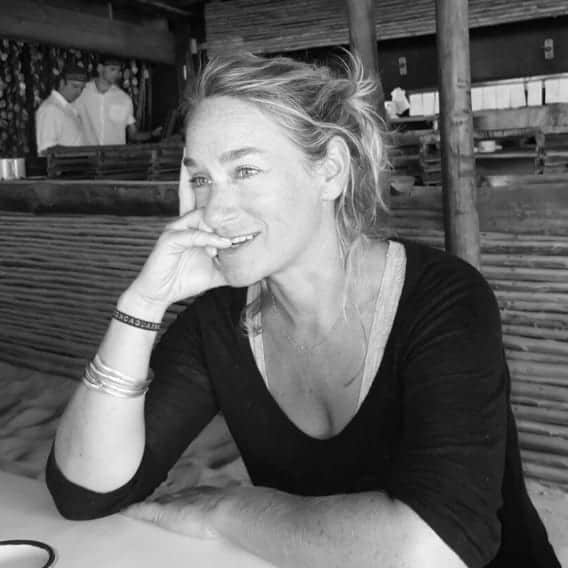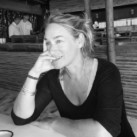
Don Miguel Ruiz Jr. is a Nagual and Toltec Master of Transformation from the Eagle Knight lineage, carrying forward the teachings of his father, Don Miguel Ruiz, and grandmother, Madre Sarita. A gifted teacher and author, he blends ancient Toltec wisdom with his personal journey to guide others toward personal freedom and spiritual growth. He leads workshops, retreats, and power journeys and is the author of several books, including The Five Levels of Attachment and The Mastery of Life. MysticMag offers you an exclusive interview.
Your apprenticeship with your father, Don Miguel Ruiz Sr., and your grandmother, Madre Sarita, began at the age of 14 and lasted for a decade. Can you share specific experiences from this period that profoundly shaped your spiritual journey?
My spiritual training began at a very young age within my family. My grandmother had already established her spiritual temple where she conducted healing sessions throughout the week. On Thursdays and Sundays, she would deliver what she called “catedras” in Spanish, essentially a sermon or spiritual lecture. These gatherings took place in a small spiritual temple in Barrio Logan, San Diego, known as Nueva Vida, where my grandparents had built their spiritual center. It was deeply rooted in the Mexican-American community, and their work was widely respected.
From Monday through Friday, my grandmother performed healings, while Thursdays were dedicated to evening meditations and lectures. Sundays were particularly special; the congregation, dressed entirely in white, would gather for a formal sermon. During these sessions, my grandmother would sometimes enter a trance-like state, channeling angelic beings and higher entities. For me, this was simply a part of life. The entire family participated, along with many members of the community. Looking back, I realize that my spiritual journey was never a separate path—it was interwoven into my family’s legacy, a tradition long established and respected.
My grandmother was well-known for her spiritual gifts. People often ask me what it feels like to walk in my father’s footsteps, but I see it differently. My brother and I are not merely continuing my father’s legacy; we are fulfilling my grandmother’s dream—her desire to share our family’s spiritual tradition beyond our immediate community.
Spirituality, for me, was a familial experience. It was about being with my grandmother, whom I adored, and witnessing the flow of people seeking healing, guidance, meditation, and prayer. Even within our family, many of us, myself included, sought her wisdom and healing.
During my childhood, I lived in both San Diego and Tijuana. After my parents divorced when I was eight, I primarily lived with my mother. However, at the age of thirteen, I moved to my father’s house in San Diego County, National City to be exact, where my grandmother also resided. By that time, my father had already left his medical career to dedicate himself fully to our family’s Toltec tradition. This transition had begun when I was around eight years old, marking a significant shift in his path. He had been apprenticing under my grandmother since
the early 1980s and formally began teaching at her temple, Nueva Vida, in Barrio Logan around 1986. Today, the site is the home to a coffee shop named Por Vida Cafe.
Before I moved in with him, my visits to my father often included attending his classes. If it was my weekend with him, I would sometimes sit in on his Friday night teachings, absorbing the knowledge simply by being present. What started as passive observation soon became active participation. When I moved in at thirteen, spirituality was no longer something I visited—it became an intrinsic part of my daily life. Our home was a center of spiritual learning, where my grandmother meditated and practiced her discipline, my father taught his apprentices, and I witnessed the deep devotion that permeated our household.
At fourteen, my initiation into the family tradition became more formal. My father assigned me the role of my grandmother’s translator. She spoke only Spanish, while many of those who sought her wisdom spoke English. It became my duty to translate her consultations, healings, prayers, and meditations, as well as her sermons and lectures.
At first, my grandmother was patient. She would pause between sentences, allowing me time to translate. But as she became more comfortable, her pacing quickened. Eventually, she stopped pausing altogether, speaking continuously while I struggled to keep up. The backlog of words I needed to translate would grow, and soon I found myself losing track of where she was in her speech. It was an overwhelming experience, one that forced me to adapt quickly.
One day, my grandmother sat me down and asked, “Miguel, do you know why you are struggling to translate for me?” I responded, “Because you’re speaking too fast! You’re not giving me enough time to translate accurately.” But she shook her head and said, “Are you using knowledge, or is knowledge using you?” At fourteen, I had no idea what she meant.
She explained, “When you translate for me, you start by listening to my voice. But after a while, you begin listening to your own voice inside your head—the voice that tells you how things should be. Once that happens, you stop listening to me. That’s why you’re struggling.”
Her solution was simple yet profound: “From now on, the voice inside your head will not be your own. It will be mine. You will hear my voice in your mind, and when you open your mouth to speak, it will come out in English. To do this, you must develop the discipline to focus entirely on me, without distraction.”
This exercise became my first lesson in meditation—an intensive training in absolute presence. To keep up with her, I had to eliminate distractions, starting with external stimuli. I closed my eyes so I wouldn’t be tempted to look around. Then, I learned to ignore bodily sensations—the itch on my nose, the sound of a chair scraping the floor. The greatest challenge, however, was silencing my own mind. Thoughts of unfinished tasks, personal worries, or trivial distractions had to be set aside. I had to train myself to focus entirely on my grandmother’s words, channeling them without interference.
Over time, my discipline improved. I learned to translate in real-time, anticipating her words almost as she spoke them. Eventually, I reached a level where I could translate fluidly, only stumbling occasionally when I encountered an unfamiliar term that I didn’t know how to translate.
Unbeknownst to me, my grandmother was teaching me not just how to translate but how to meditate, how to channel, and how to be fully present. She was showing me how to get out of my own way so that something greater could flow through me. This, she taught me, was the essence of faith—not the belief in something external, but an unwavering trust in oneself.
Faith, she said, is the certainty that you can take the next step, that you can move forward without hesitation. It is the confidence to express yourself fully, without fear or doubt. This is what my grandmother instilled in me, and it remains the foundation of my spiritual path.
After completing your apprenticeship, your father advised you to “find your way out” and “master Death by becoming alive.” How did you interpret this guidance, and in what ways did it influence your personal and professional life?
I can answer that in two phases—the perspective I had back then and the one I hold now.
Back then, I had an aha moment, a profound realization that allowed me to perceive life beyond the human form. I experienced life as it truly is—beautiful, limitless, and awe-inspiring. In that moment, I felt an incredible high, a deep sense of clarity and connection. I am Life, and Life is all around me. But when I returned home, I slowly descended from that elevated state. I thought I was still there, still holding onto that heightened awareness, but little by little, I fell—until I hit rock bottom.
And that’s when I had my greatest realization. The deepest heartbreak I experienced wasn’t just about losing someone; it was about losing the illusion of who I thought I was. The image I had of myself—Miguel Ruiz Jr.—was just that, an image, a projection, an illusion. I had convinced myself that maintaining that high, that aha moment, meant continuing to live in that energy indefinitely, that somehow that identity was me and I didn’t have to do any more work for it. But life doesn’t work that way. Life will throw curveballs. It will challenge you, teach you, and give you a moment to experience both its highs and its lows.
I hit rock bottom when I was a young adult because I lost someone I loved deeply. That loss marked the beginning of my awakening. It was then that I picked up my father’s book for the first time after having dismissed it years earlier. The first time I attempted to read The Four Agreements, I put it down around chapter three. At the time, it felt like my father was just telling me what to do all over again. That’s how it is when you grow up in a family like mine— sometimes wisdom sounds like another parental lecture. But when I truly needed guidance, I picked it back up, and this time, I allowed it to help me heal.
Mastering death by embracing life means letting go of fear—especially the fear that stops us from truly living. The greatest fear isn’t death; it’s trusting yourself enough to make choices, to respect yourself, to say yes or no to what aligns with you, and to take responsibility for those choices. True ownership of your life isn’t gaslighting yourself, as some might say today—it’s fully stepping into your power.
If you want personal freedom, you must honor your right to say yes or no—and, just as importantly, you must respect that life and others have the right to say no to you. Don’t take it personally. Don’t let rejection reinforce self-doubt. Instead, do the inner work that prepares you for the moments when life does say yes. Because when opportunities arise, you need to be ready to step forward.
Mastering death by embracing life means enjoying being alive, stepping into the infinite possibilities that exist within you. It means releasing any fear that prevents you from living as your true self, especially to release the fear to love oneself as we do others. It’s okay when someone says no to you—that’s their truth, their preference, and it deserves respect. Just as your no holds power, so does theirs. Respect.
This is the understanding I have now. When I first encountered these ideas, I misinterpreted them. I thought it meant I was supposed to live in bliss every single day. But the truth is, mastering the self means using everything you’ve ever learned—not just when life is good, but especially when life is difficult, painful, or terrifying. It means keeping the story moving forward no matter what and enjoy being you.
At the core of it all is the realization that you are alive. You are pure potential. You manifest your reality with a simple action: saying yes or no. Every choice is a step forward—or the decision not to take that step. That’s where my grandmother’s faith comes in.
As a Nagual, you continue to pass along the wisdom and tools of your family’s traditions. How do you adapt these ancient Toltec teachings to resonate with contemporary audiences?
I used to think that what we call “common sense” was just the wisdom we gain from our experiences in life. But my grandmother taught me something deeper—something that changed the way I see tradition.
She told me, “If you practice the Toltec tradition the way I did, or the way your father does, you’re killing the tradition.” At first, that seemed counterintuitive. But she explained that if all I did was repeat what they said and imitate their ways, like a parrot echoing words, I wouldn’t truly be living the tradition. I would just be preserving it in a hollow way, not letting it take root in my own life.
True teaching, she said, comes from experience. My father learned this tradition at a different time than my grandmother. My great-grandfather learned it in a different world than my great great-grandfather. Each of them walked their own unique path, shaped by the era in which they lived. They didn’t just repeat what was taught to them; they lived it, adapted it, and embodied it in a way that made sense for their time.
From them, I’ve inherited many things: the discipline of my great-grandfather, don Leonardo, the strength and power of my great-great-grandfather, don Exiquio, my grandmother’s unwavering faith, and my father’s wisdom. But my brother and I? We have our own experiences, our own challenges, our own interpretations. Even though we were taught by the same teachers, life itself became our greatest teacher, guiding us down our own unique paths.
That’s the essence of keeping tradition alive—not by rigidly preserving it, but by translating it through our own lived experiences. When we speak, we don’t just recite lessons from the past; we share what life has taught us in this moment, in this time. And that’s what makes it modern, relevant, and alive.
Some may hear our words and find them meaningful. Others may not. And that’s the beauty of it—wisdom isn’t meant to be forced; it’s meant to be discovered.
In your book, “The Five Levels of Attachment,” you explore how beliefs can shape our reality. Can you elaborate on the concept of attachment in the context of Toltec wisdom and its impact on personal freedom?
Intimacy, healing, and love are deeply connected, and I’ve come to understand that intimacy can only truly flourish where trust exists. Trust requires vulnerability, and for a long time, I didn’t fully grasp just how much I was protecting my emotional wounds rather than exposing them. I thought I was shielding myself from pain, but in reality, I was not letting my wounds heal and I was blocking intimacy, keeping myself from being fully present in my relationships. That realization was profound—until I faced and healed my wounds, they continued to shape my relationships, making me project old heartbreaks onto new connections.
The Seven Secrets to Happy, Healthy Relationships became a guide for me, unfolding as a process. First, I had to become aware of my wounds. Then, I had to actively engage in healing. Finally, I needed to maintain that growth so it could be reflected in my relationships. Awareness alone wasn’t enough—I had to do the work.
One of my father’s most powerful metaphors that helped me was the idea of carrying a “corpse over my shoulder.” Unhealed wounds weighed me down, affecting every part of my relationships, sometimes without me even realizing it. But once I let go of that burden—once I allowed myself to learn rather than punish myself—I finally opened the door to real love and connection.
When I think about my relationship with my wife, I see her as someone with whom I share the deepest level of intimacy, far beyond any best friend. Out of the billions of people in the world, she is the one person with whom I am completely open. True partnership isn’t just about companionship; it’s about choosing to be fully seen, fully vulnerable, and fully present with another person with whom you are co-creating a life with.
Looking back, I wonder: What was the most transformative part of my healing journey? Was there a specific moment or realization that finally allowed me to release the past and embrace intimacy fully?
Your collaborative work, “The Seven Secrets to Healthy, Happy Relationships,” emphasizes the importance of relationships in achieving personal freedom. What are some key insights from this book, and how can individuals apply them to cultivate more fulfilling relationships?
This reflection on attachment, freedom, and the power of beliefs has been a deeply personal journey for me. Over time, my understanding has evolved, shaped by both experience and observation. I now see attachment not as something inherently negative, but as a natural and even necessary part of life. When we invest our energy into something, it becomes meaningful to us—it becomes a part of our world. The real challenge isn’t the attachment itself; it’s our inability to let go when the time comes. That’s where suffering begins—when we start defining ourselves by what we’re attached to rather than by who we are without it.
One of the most eye-opening realizations I’ve had is how even tools meant for personal freedom, like The Four Agreements, can be distorted. If I judge myself or others for not following them “correctly,” I lose the essence of choice and turn them into just another form of domestication. That shift—from using a belief as a tool to letting it become a condition for my worthiness—is where corruption happens. I did turn the Four Agreements into the Four Conditions, and I wasn’t even able to tell that I did because I was so attached to domestication.
Domestication, at its core, is built on conditional love. I grew up internalizing a system of reward and punishment, despite my teachers’ best efforts, believing that I had to meet certain expectations to be worthy of love and acceptance. And when I attached myself to those expectations, I risked losing presence, clinging to outdated identities, beliefs, or systems that no longer served me, this is how I corrupted the Four Agreements and other beautiful traditions that teach us how to love unconditionally.
One of the most liberating insights I’ve gained is understanding the difference between truth and belief. Truth exists whether I acknowledge it or not, like a black hole in space. Beliefs, on the other hand, only exist as long as I say “yes” to them. That realization gave me power—if a belief was no longer serving me, I had the ability to say “no” and let it go.
And perhaps the most important lesson in all of this has been forgiveness—especially self forgiveness. I’ve had to forgive myself for accepting conditional love, for holding onto beliefs that once felt true but no longer are, and for evolving beyond what I once thought I had to be.
Reflecting on this makes me wonder: What has been the most challenging attachment for me to release? And what has truly helped me let go when the moment called for it?
If you would like to find out more about Don Miguel Ruiz Jr, please visit https://www.miguelruiz.com/teacher/don-miguel-ruiz-jr/



